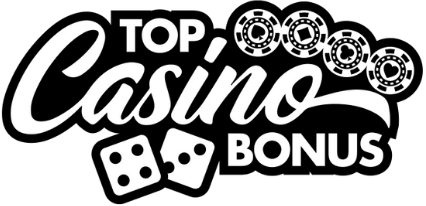How to handicap NBA games: a statistical approach
The NBA betting landscape’s swarming with analytics these days, yet most folks slap stats together like they’re chili ingredients, hoping for something tasty. True handicapping isn’t just watching highlights or looking at points per game. It’s surgery, not a shotgun blast. And if you want to beat the sportsbook house that’s spent decades tightening margins, you’d better come with something sharper than guesswork.
Table of contents
Understanding a handicapper’s foundation
Let’s get one thing straight: handicapping isn’t predicting who wins, it’s measuring expected value. The public chases stars and hot streaks. The wise measure context, pace, and probability. You’re not looking for winners; you’re hunting inefficiencies.
Line movements and market sentiment
Too many greenhorns ignore opening lines. But watch the initial move, how Vegas books shade a line based on gut-level expectations, and compare that to where the sharps bet early. Big money doesn’t chase trends; it identifies mispriced markets fast. If you want to understand market value, watch how a line shrinks or pumps over the first 24 hours.
Key statistical metrics that matter
Now we get into the thick of it. You can’t rely on box scores or SportsCenter segments. Real handicapping means slicing into advanced stats and understanding what they whisper about a team’s true profile.
Effective field goal percentage (eFG%)
Basic FG% is a dinosaur. eFG% includes the added value of 3-pointers. Teams heavy with efficient perimeter shooting can torch even top-rated defenses. When gauging matchups, measure offensive eFG% against opponent defensive eFG%. That’ll tell you real threat level.
Free throw rate and possession control
Games are won in the margins, and FT rate (FTA/FGA) shows how often a team gets to the line, crucial late game. Combine that with turnover ratio and rebound rate to chart how well teams maintain possession. If you’re giving away more possessions than you create, you’re setting fire to your edge.
Pace of play and implied totals
Pace (possessions per 48 minutes) is vital. Two teams might average 110 pts per game, doesn’t mean they’re offensive powerhouses. Without understanding pace, you’ll misread overs and unders completely. Always bake team pace into your total game calculations, then compare with bookmaker implied totals to find betting angles.
Contextual brilliance beats raw numbers
I’ve seen good handicappers fumble because they didn’t understand schedule context. Fatigue, travel, revenge spots, these aren’t myths; they’re game-warpers. Don’t trust a spreadsheet to tell you what 3 games in 4 nights will do to a man’s legs.
Home/away splits and altitude effects
Denver and Utah are altitude nightmares for visiting teams on the back half of a road swing. Watch Eastern teams fade late in the third quarter. Keep a database of NET ratings home vs road, they often look like two different squads.
Injuries, rotations and coaching impacts
Don’t stop at the injury report. Is the sixth man logging starter minutes now? Is the coach adjusting his tempo without his center? Track playtime changes over a 3-game rolling basis. That’s where hidden value lives.
Using models and simulation, the right way
Here’s where many modern bettors fall off. They build fancy models without understanding what the numbers represent. Garbage in, garbage out. A proper predictive model doesn’t overfit, it recognizes volatility and factors in regression candidates.
Monte Carlo simulation and regression analysis
I’ve run thousands of simulated scenarios on playoff matchups. Monte Carlo methods help when outcomes rely on probabilistic sequences. But regression analysis, now that’s your hammer. Use multivariate regression across pace, eFG%, points per 100 possessions, and defensive efficiency to project true win probabilities.
Shopping lines and exploiting gaps
Even the best model’s useless if you don’t get the best number. Line shopping’s not optional, it’s gospel. Get yourself accounts across major sportsbooks. You’ll notice how BetMGM shades differently than Bet365, and sharply different from Bally Casino or 888casino. Those little flickers, half-point swings, alternative totals, can make or break your bankroll over the season.
Opportunities for middling
Once you understand how to catch line movement across books, you can start considering middle betting. I’ve snuck more profit from middles than any other angle in tight playoff games. But mind you, middling only works when you’ve tracked the openers and predict the next swing.
Live betting and adjusting in real-time
If there’s one place where old-school handicapping meets modern edge, it’s live betting. But don’t go in blind. You should enter every game with projected live total thresholds. When that second quarter pace breaks your model’s expectation, act on it. This isn’t reaction, this is anticipation with teeth.
Reading momentum without falling for it
Momentum’s what the public worships. But as a disciplined bettor, you must separate unsustainable shooting from real adjustments. Did the coach change defensive coverage? Is foul trouble driving unexpected rotations? That’s where live betting insight is born.
Closing thoughts: precision over passion
The NBA is where edges are narrow and the margins shrink fast. Everyone in the market’s got access to data, but only a few know how to interpret it correctly. Stick to your process, always account for context, and never chase. Each bet isn’t a ticket to riches, it’s a test of whether you understand what the numbers truly say.
The difference between guessing and handicapping is discipline. It’s mastery of subtle variables, not flashy picks. You’re hunting value like a sniper, not gambling like a tourist. That’s how long-term bettors survive, one decimal of edge at a time.





0 Comments